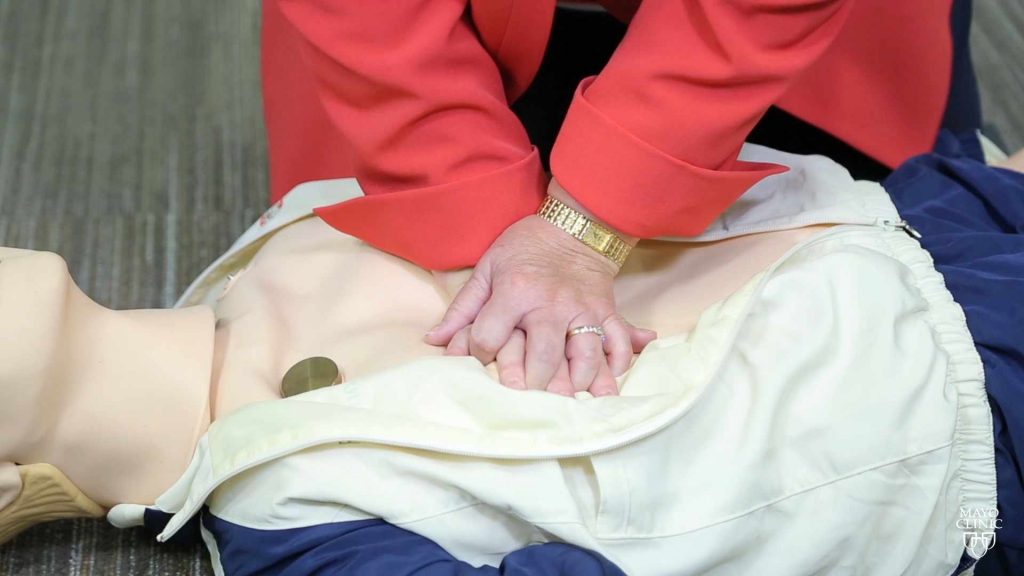 A modified version of CPR is making it easier to remember what to do if someone suddenly collapses in front of you.
A modified version of CPR is making it easier to remember what to do if someone suddenly collapses in front of you.
Experts say continuous-compression CPR, also called hands-only CPR, is easier to learn and perform, and it doesn’t require breathing for the victim. According to the American Heart Association, hands-only CPR can be performed on teens or adults using a compression rhythm that matches the beat of the Bee Gees song, “Stayin’ Alive.”
In this Mayo Clinic Minute, nurse educator and CPR trainer Jill Henderson shows you how easy it is to use hands-only CPR to save a life. Jeff Olsen reports.
Journalists: Broadcast-quality video pkg (1:05) is in the downloads. Read the script.







